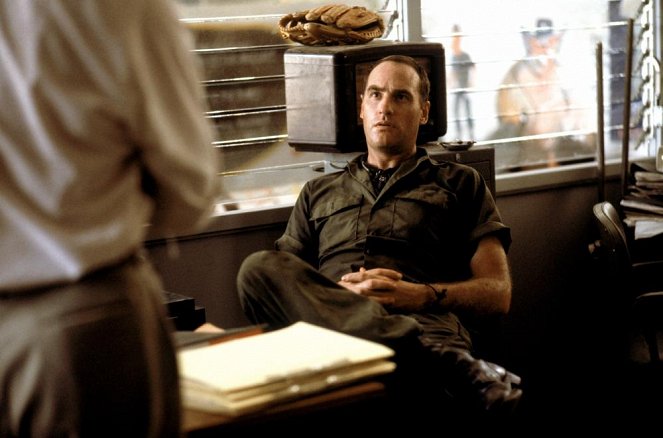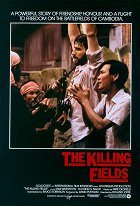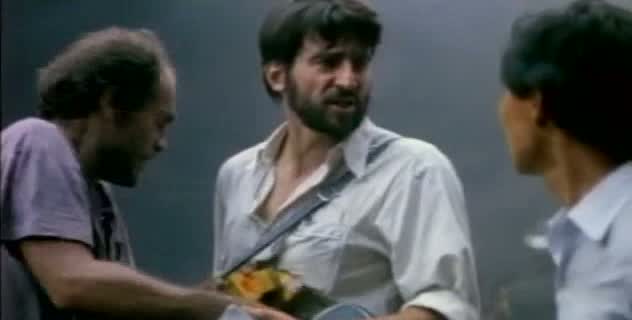Directed by:
Roland JofféScreenplay:
Bruce RobinsonCinematography:
Chris MengesComposer:
Mike OldfieldCast:
Sam Waterston, Haing S. Ngor, John Malkovich, Julian Sands, Craig T. Nelson, Spalding Gray, Bill Paterson, Athol Fugard, Mark Long, Patrick Malahide (more)VOD (1)
Plots(1)
The true story of the friendship between Dith Pran (Haing S. Ngor) and Sidney Schanberg (Sam Waterston). The film begins in 1973 with Schanberg a New York Times journalist assigned to Cambodia, and assisted in his efforts by local representative Dith Pran. When Pnomh Penh falls to the Khmer Rouge two years later, Dith Pran helps Schanberg escape but must himself remain behind. Back in New York, Schanberg begins to draw up plans for how he might rescue his friend. (StudioCanal UK)
(more)Videos (1)
Reviews (9)
At first, it seems like just a great performance by Sam Waterston, but this film develops incredibly until you reach the point where it's an immensely powerful drama, both socially and humanly. War is depicted here without embellishments, yet most of the time, we're not even on the battlefield. The impact on the viewer who sees the result is even greater.
()
Roland Joffé was at the peak of his strength in the mid-1980s, and this can very much be felt in The Killing Fields. The pathos and urgency imbued double story of an American journalist and his Cambodian colleague, left to the mercy of the Khmer Rouge in the 1970s, has a very clear moral message that, surprisingly, criticizes the traditionally empathetic American foreign policy far more than the incomprehensible Khmer Rouge fanaticism. The most powerful weapon of The Killing Fields is certainly not the fairly simple and straightforward story, but rather the atmosphere and perfect evocation of the time when the West was fleeing and the Reds were approaching Phnom Penh from the rice fields. One of Joffé’s directing highlights is a multi-layered reflection on events – a documentary played from a video, Sam Waterston's desperate eyes and Puccini's bitter aria Nessun Dorma. Powerful. So powerful that even Lennon's final "Imagine" cannot compete with the moment of awareness of absurdity, injustice, and hopelessness. From my perspective, the film could have been a few dozen minutes longer, because the passages from the Ankha camp are absorbing and extremely interesting. Unfortunately, it is also incomplete, too curt and sometimes unnecessarily tendentious (the truly "flash" episode with the baby boy). Although, similarly to Stone's Platoon, this is a literal and manipulative film, the theme and performance represent a delicacy that I had experienced in a spectator trance. The style in which Joffé involuntarily incorporates suffering and brutality into the story reflects some of the coldness and disinterest of the mass media... and that's why it sounds like a desperate cry. Certainly not a flawless film, but undoubtedly a powerful viewing experience for anyone interested in red totalitarianism.
()
I would make all voters of the Communist Party watch this film, because this is what it looks like when communism is put into practice. Joffé perfectly portrayed the dark atmosphere of genocidal Cambodia under the Khmer Rouge, the communist uniformity and brainwashing makes you sick, many scenes will give you the chills. In Pol Pot’s Cambodia, almost anything was possible in terms of evil and trampling on human dignity, so it is not surprising that even a "little girl with a blue plastic bag" can easily become synonymous with death. The performance of Cambodian non-actor Haing S. Ngor as Dith Pran, an interpreter who experiences the Pol Pot regime first-hand, is riveting and rightfully Oscar-winning. Interesting fact, Haing himself went through the hell of the Pol Pot regime, which makes his performance all the more believable.
()
There is nothing difficult to understand about the premise of this film. The main motive is the friendship of a professional journalist who tries to map the events in Cambodia and a local who takes him around this mysterious and beautiful country. Unfortunately, at a time when the Khmer Rouge are trying to seize the government. A story that only real life could have written. When we add in the precise camera and the fact that the Khmers carried out purges that would make even Hitler green with envy, trust me it’s not a pleasant viewing experience. The first half lets you navigate yourself in the events, but the second shows true evil. It baffled me that anyone would participate in such atrocities. It was horrifying, not only visually in some scenes but also in terms of the psychology of certain characters. It’s been a long time since I spent two hours just gaping at some film in total stupor.
()
How is it possible that such powerful content can be expressed through masterful form? With this film, a picture often says more than a few thousand words. Rather than an uncompromising anti-communist agitprop, The Killing Fields is a gripping story about the distressing reunion of two lifelong friends. With great distinctiveness and candor, the first half skillfully captures the disarray of a state affected by the clenched fist of the communist revolution. The second half then shows with what coldness the social stratum of intelligence can be liquidated. The relentlessness of the labor camp, from which there is essentially no escape, then escalates into horrifying images dominated by a little girl with a blue plastic bag, and the subsequent transition to the "killing field." The ending becomes even more powerful and emotional, causing even the toughest person to momentarily forget their toughness and be deeply moved.
()
Gallery (73)
Photo © Warner Bros. Pictures



Ads